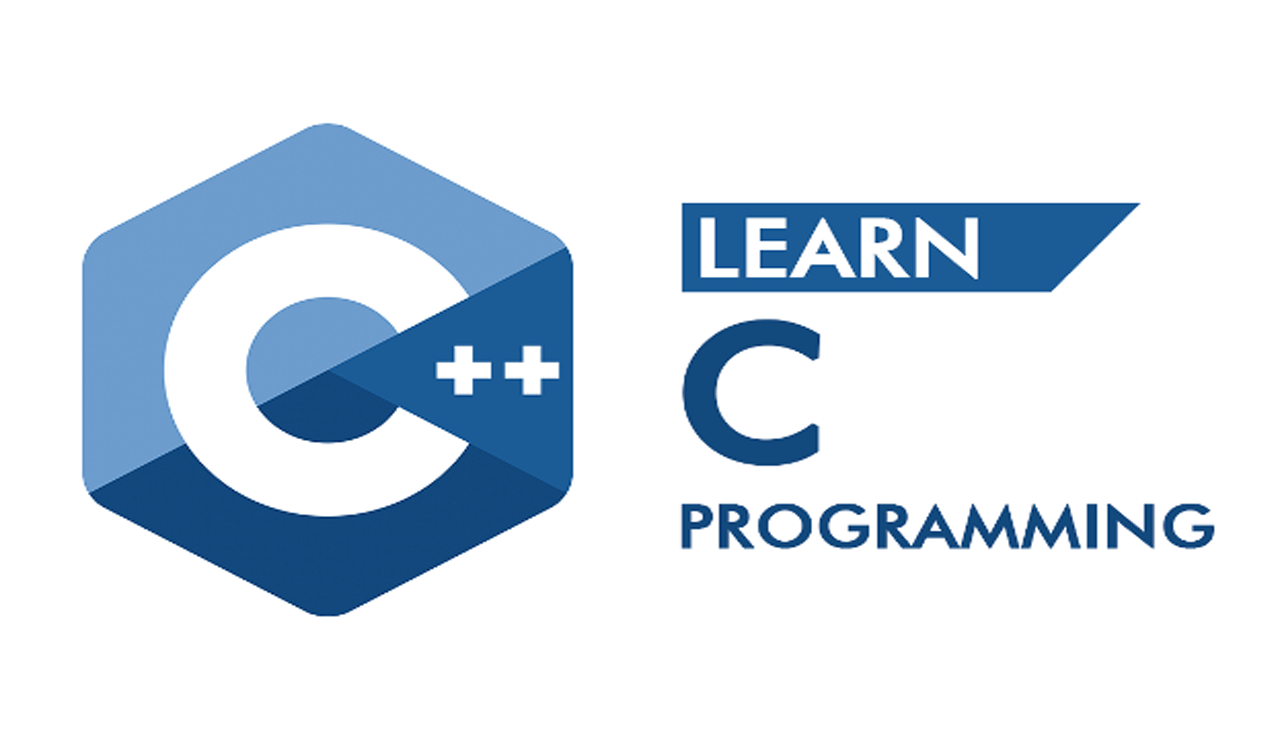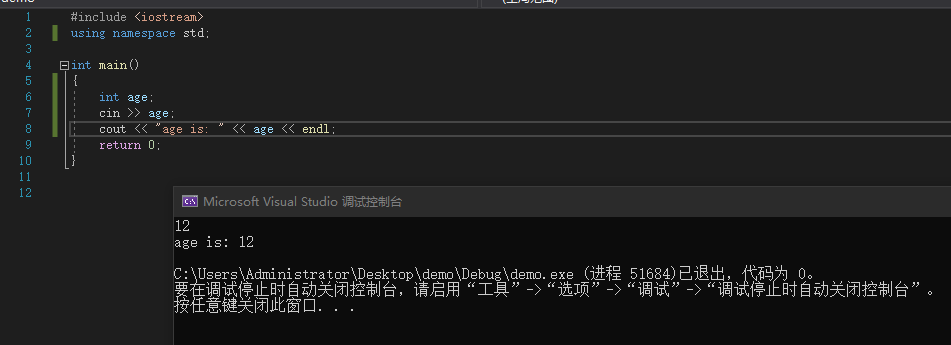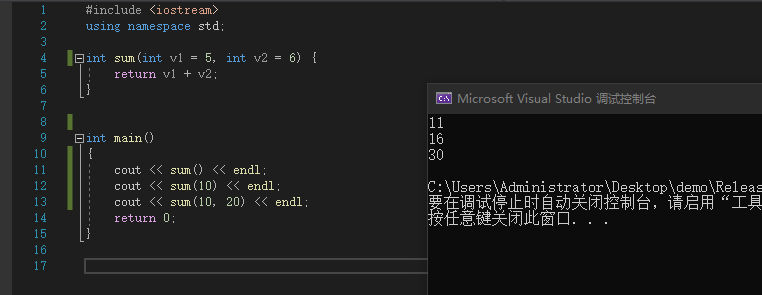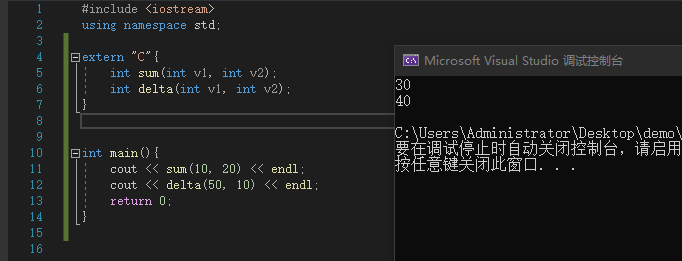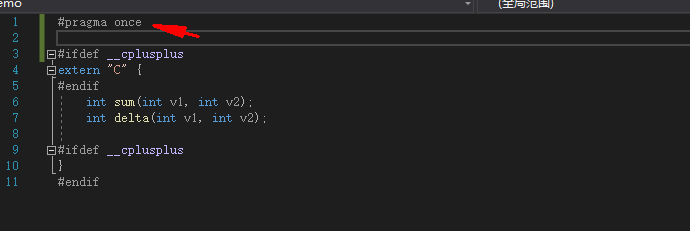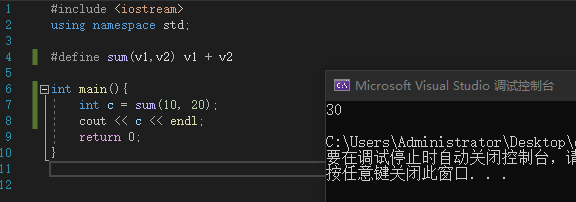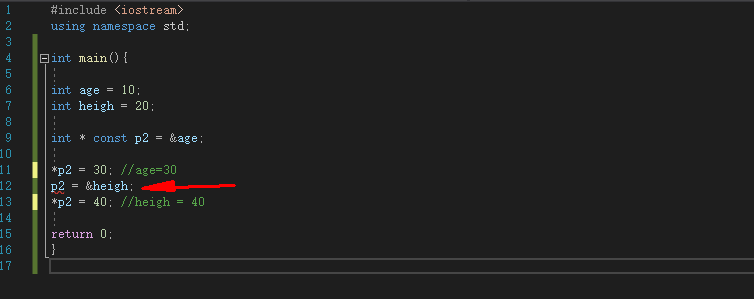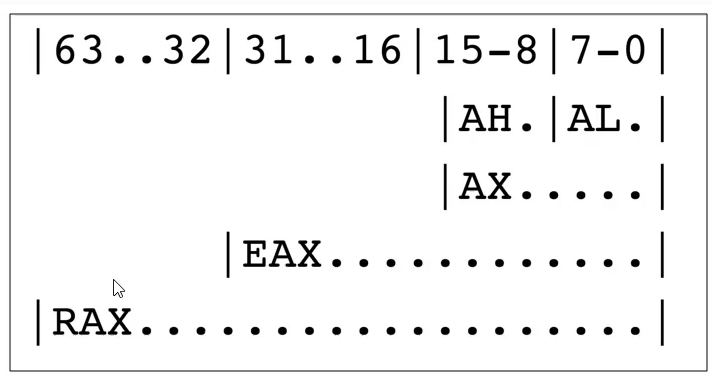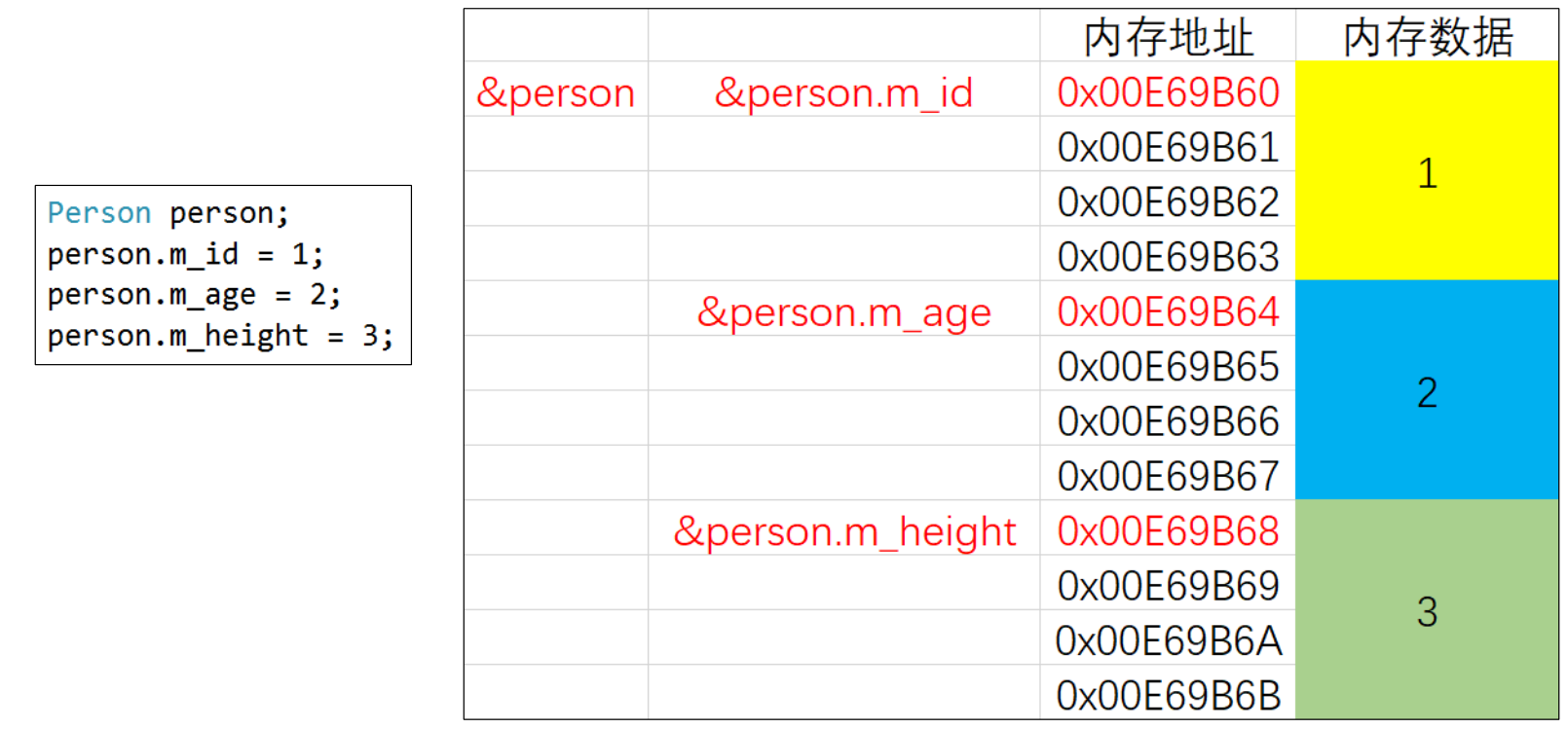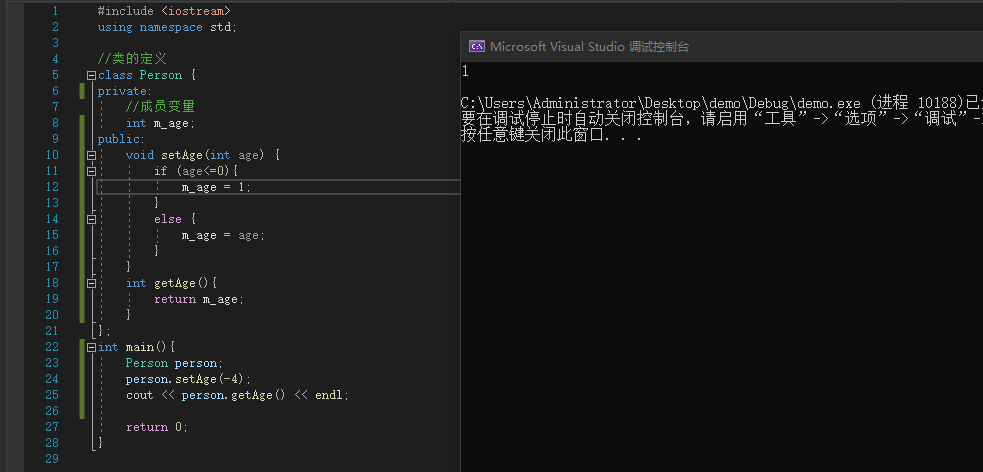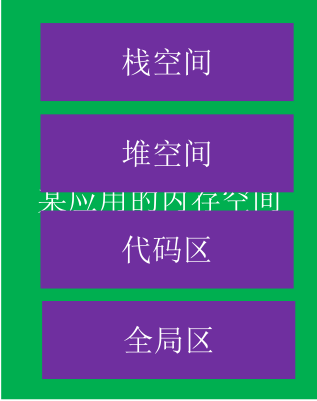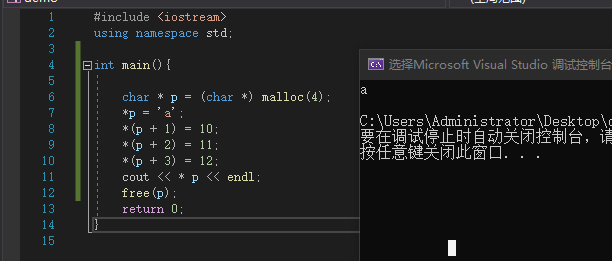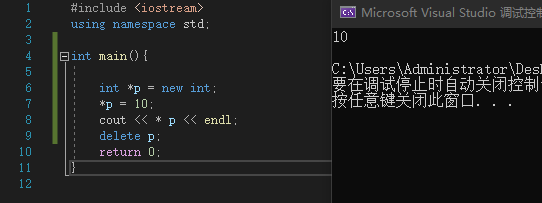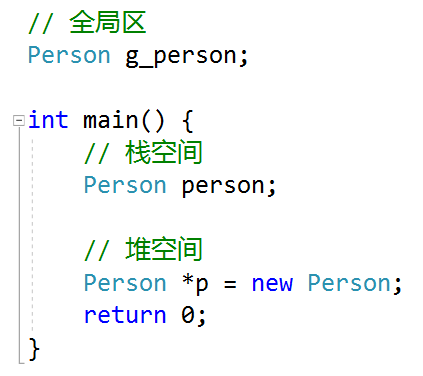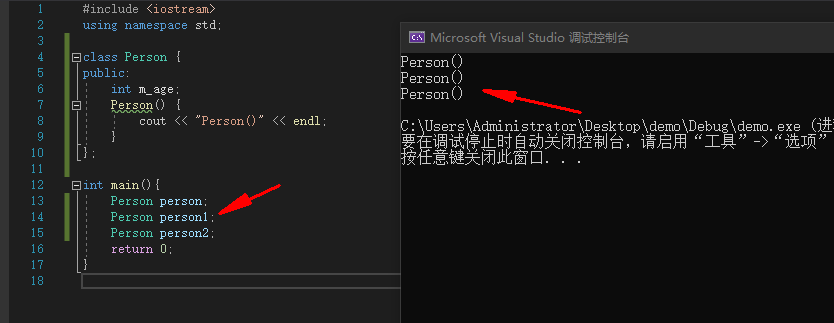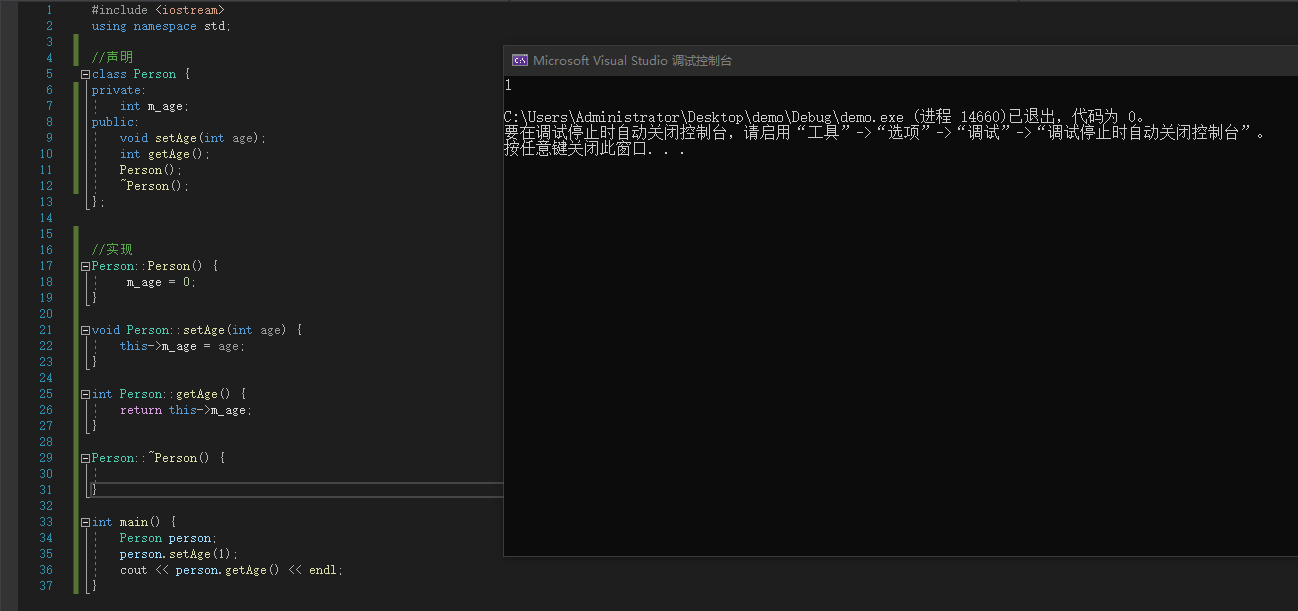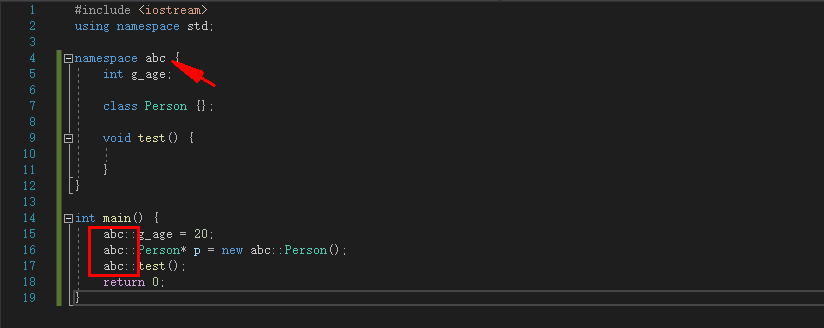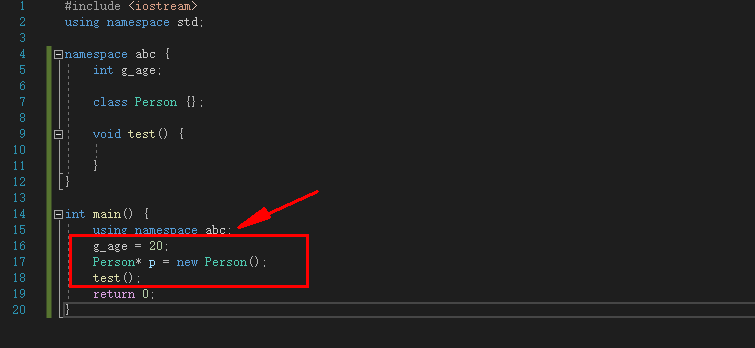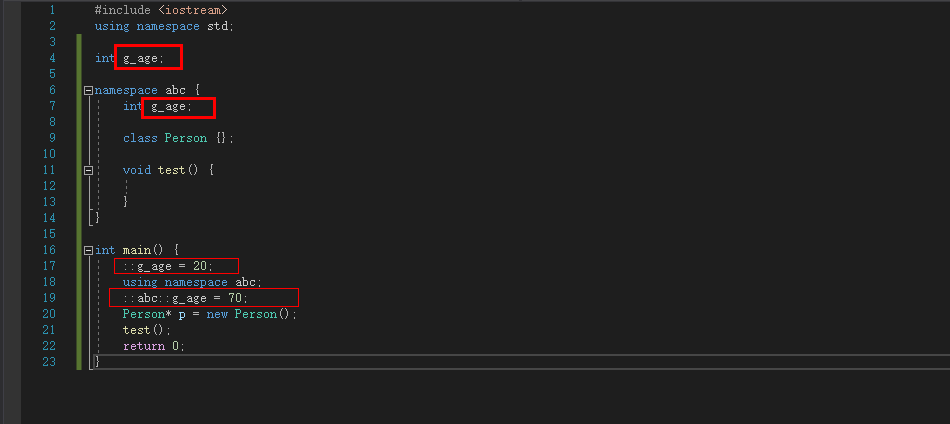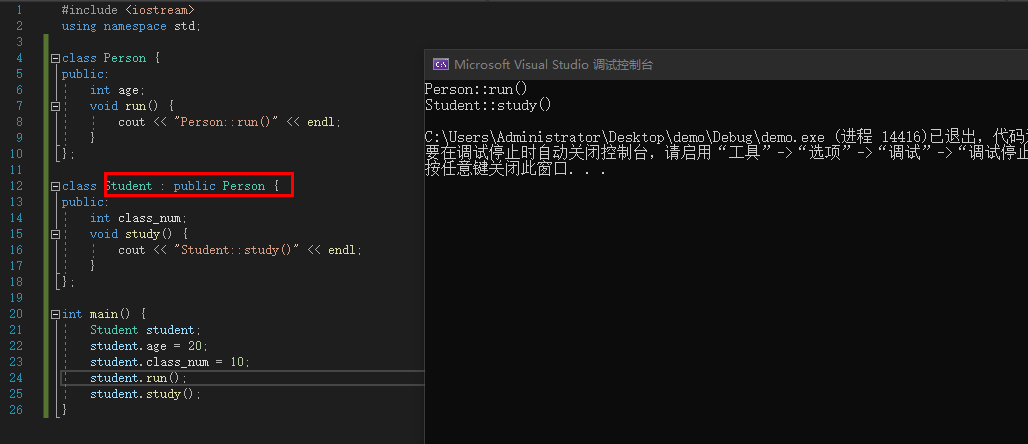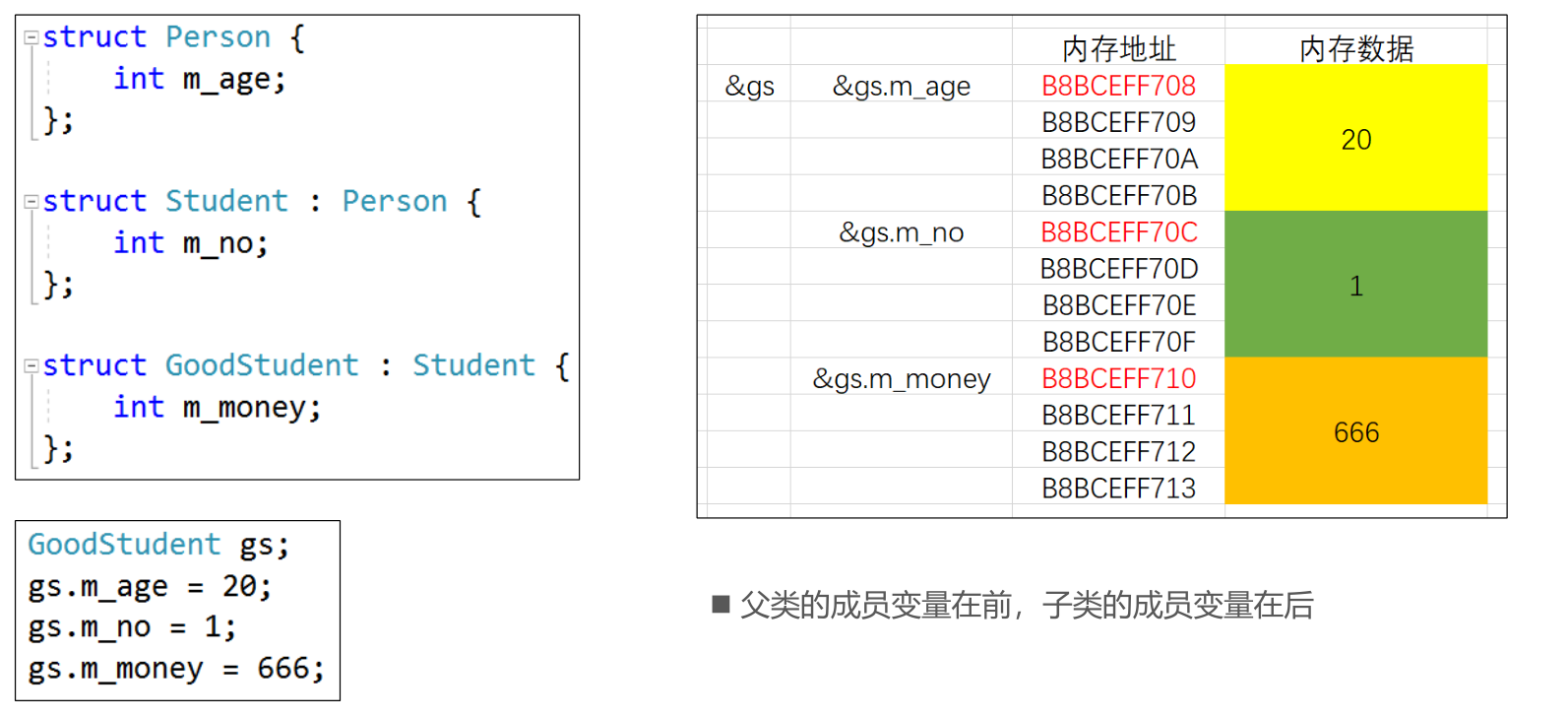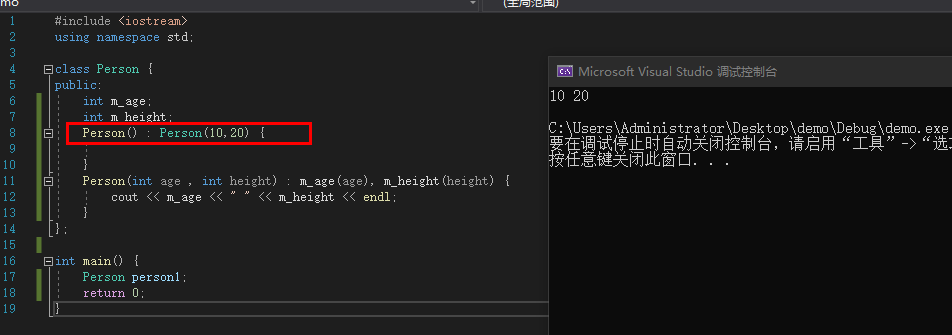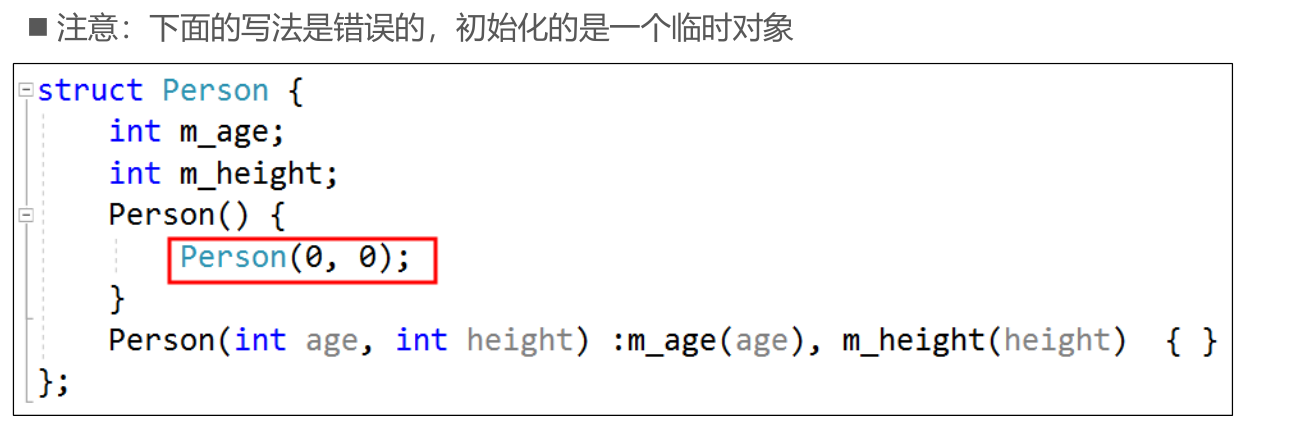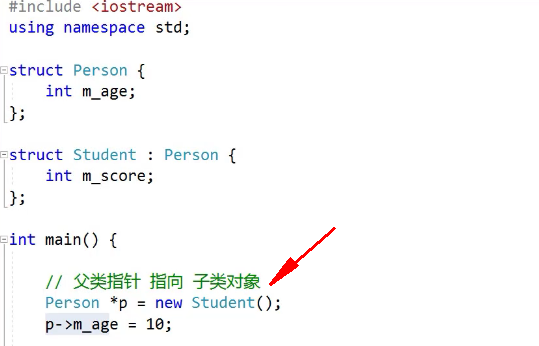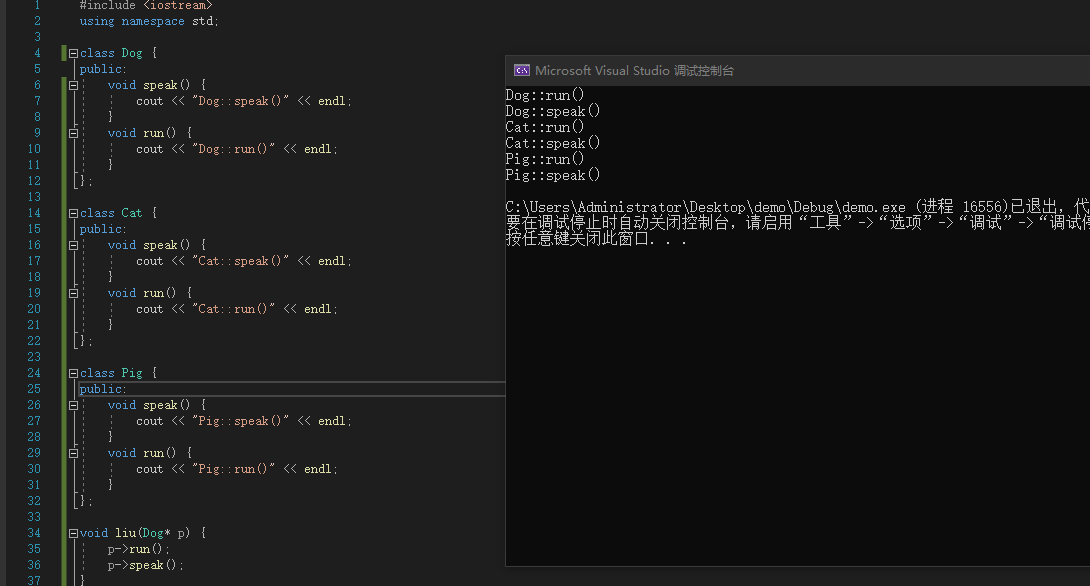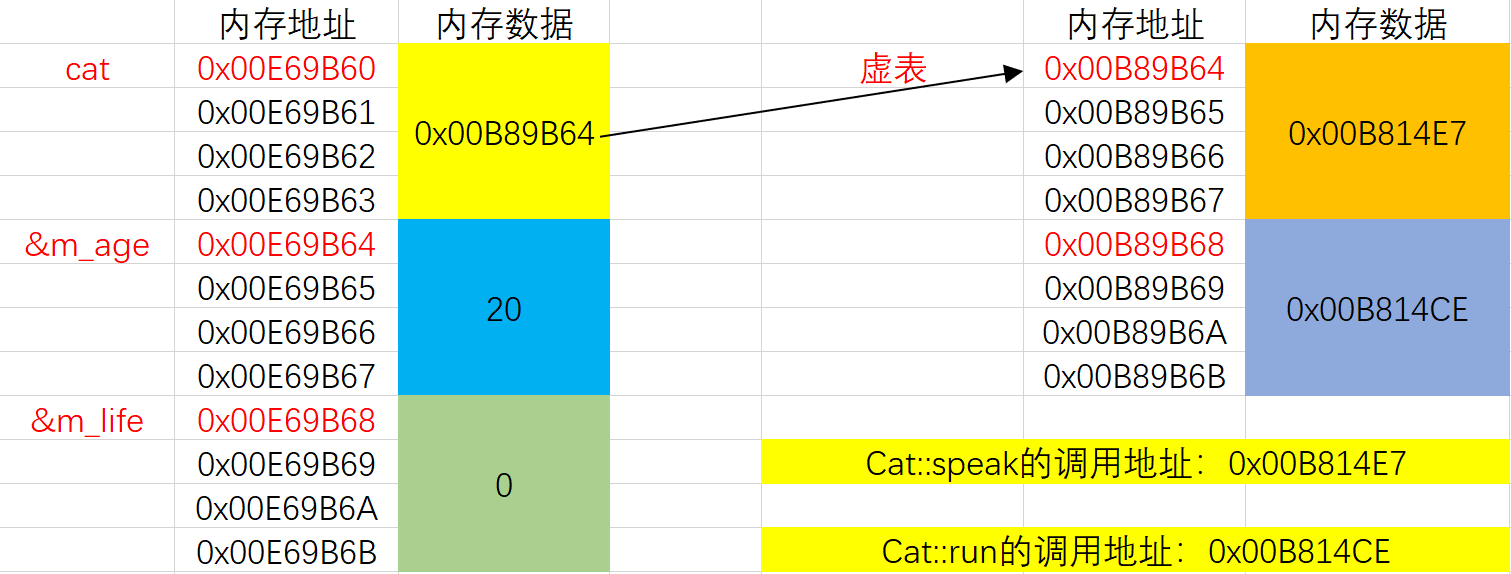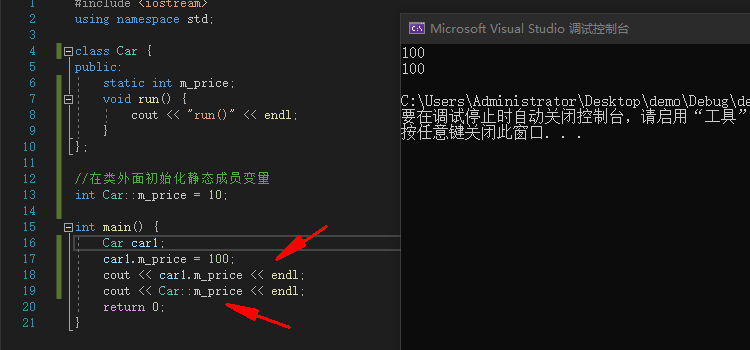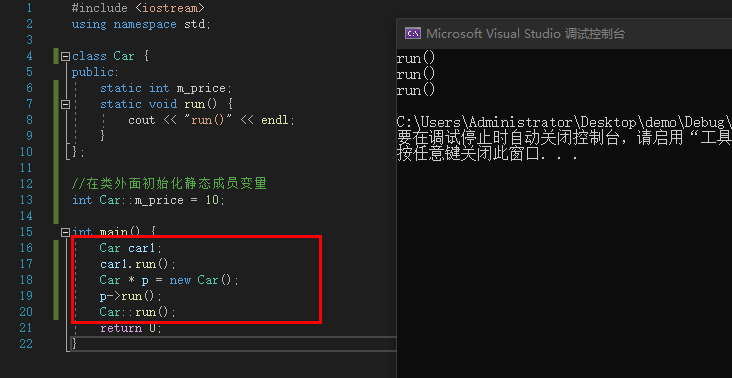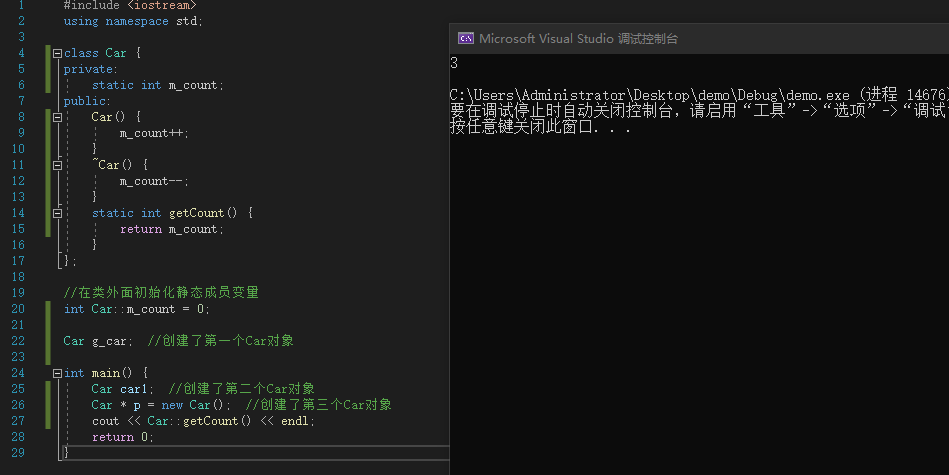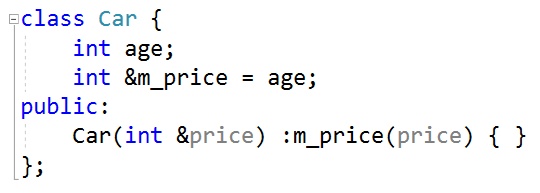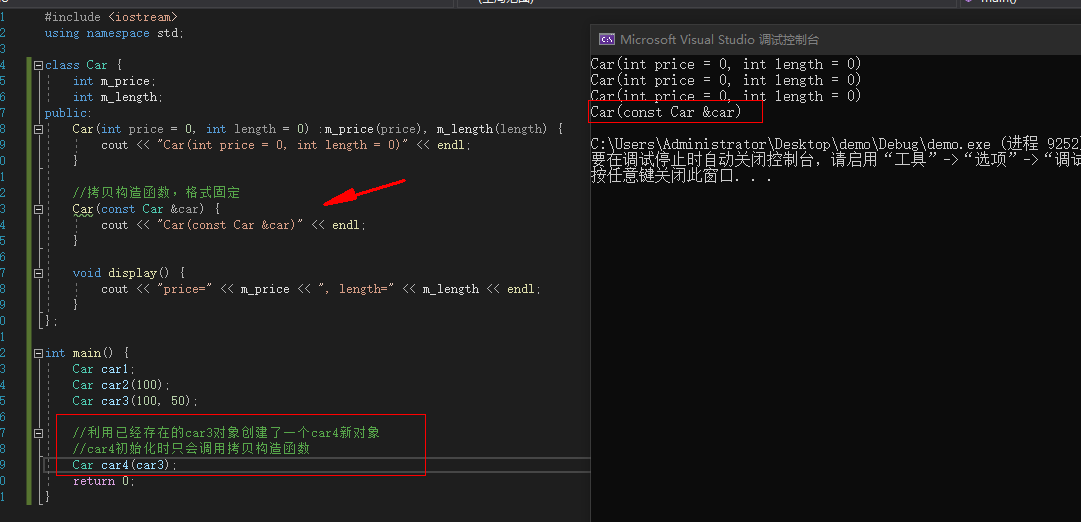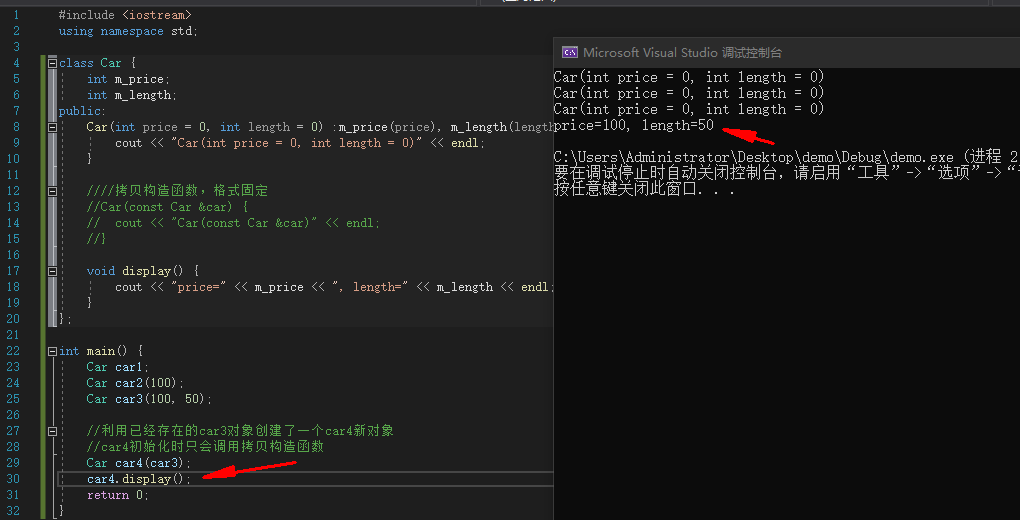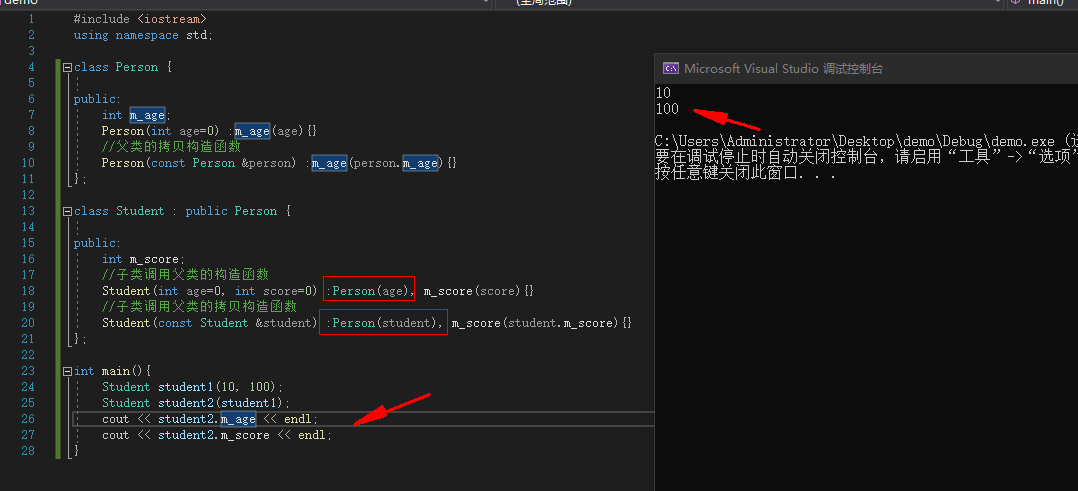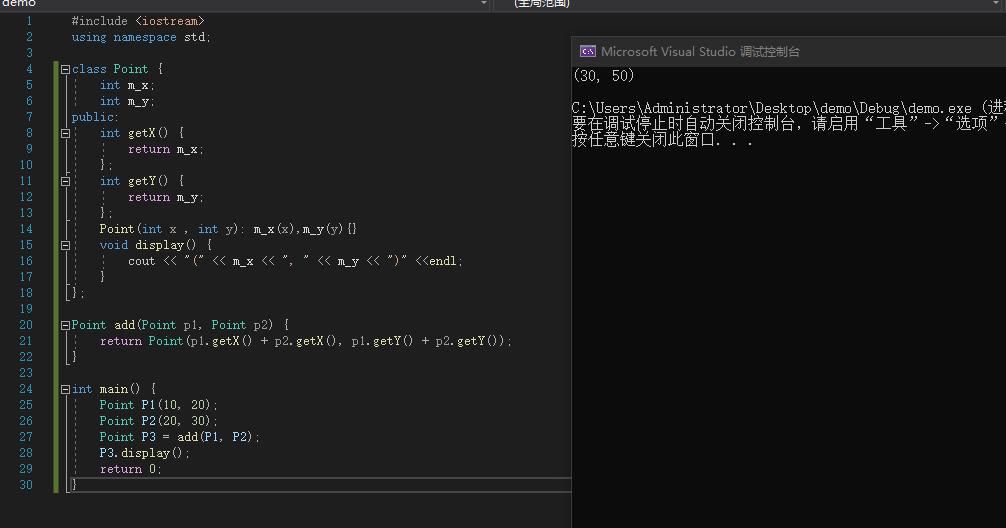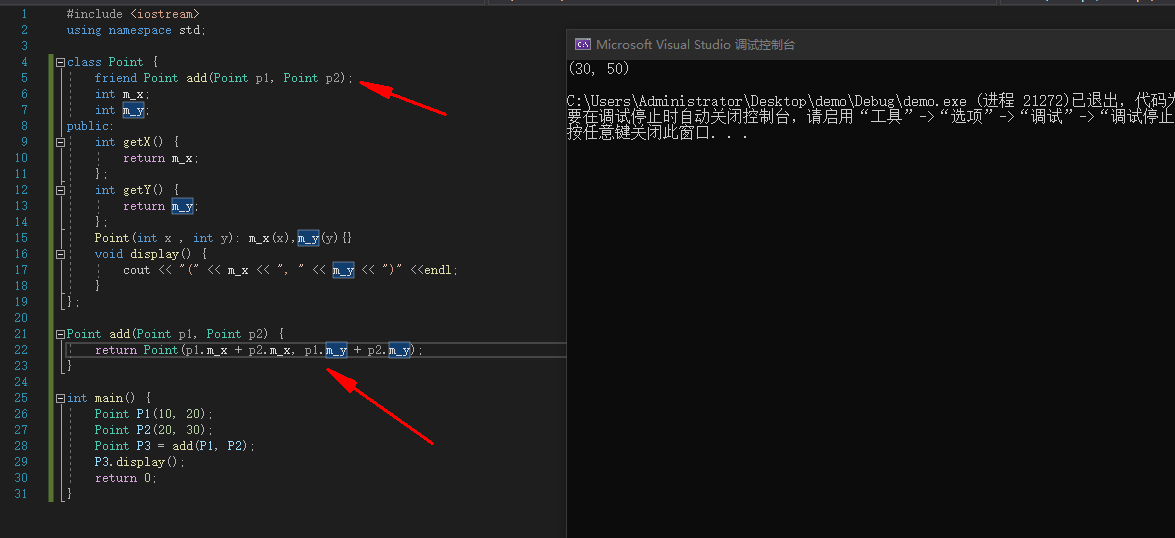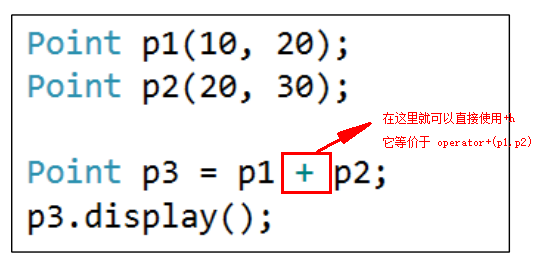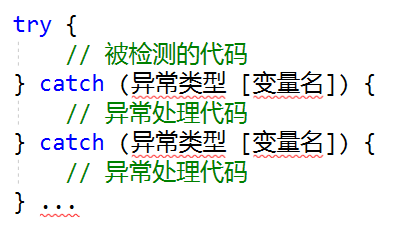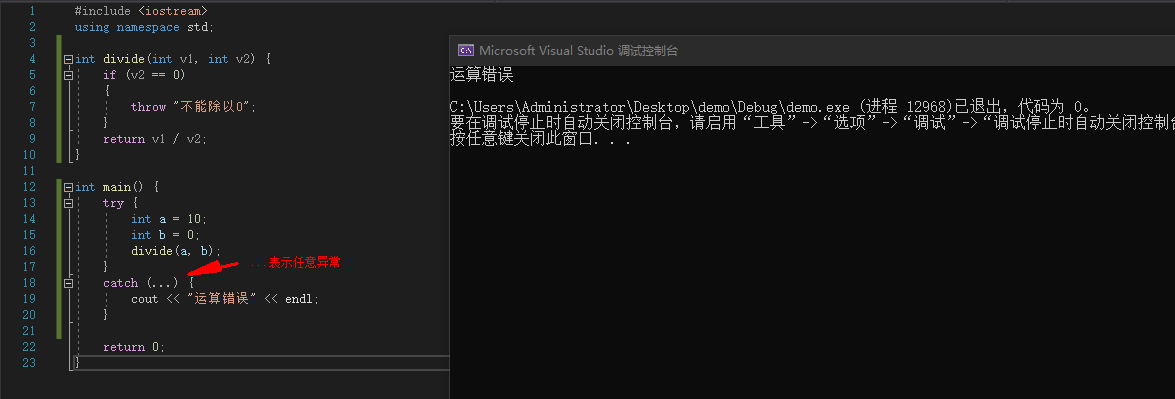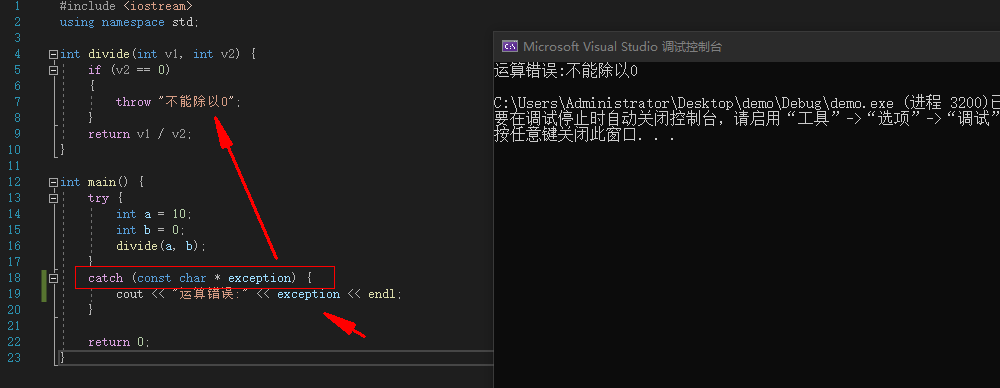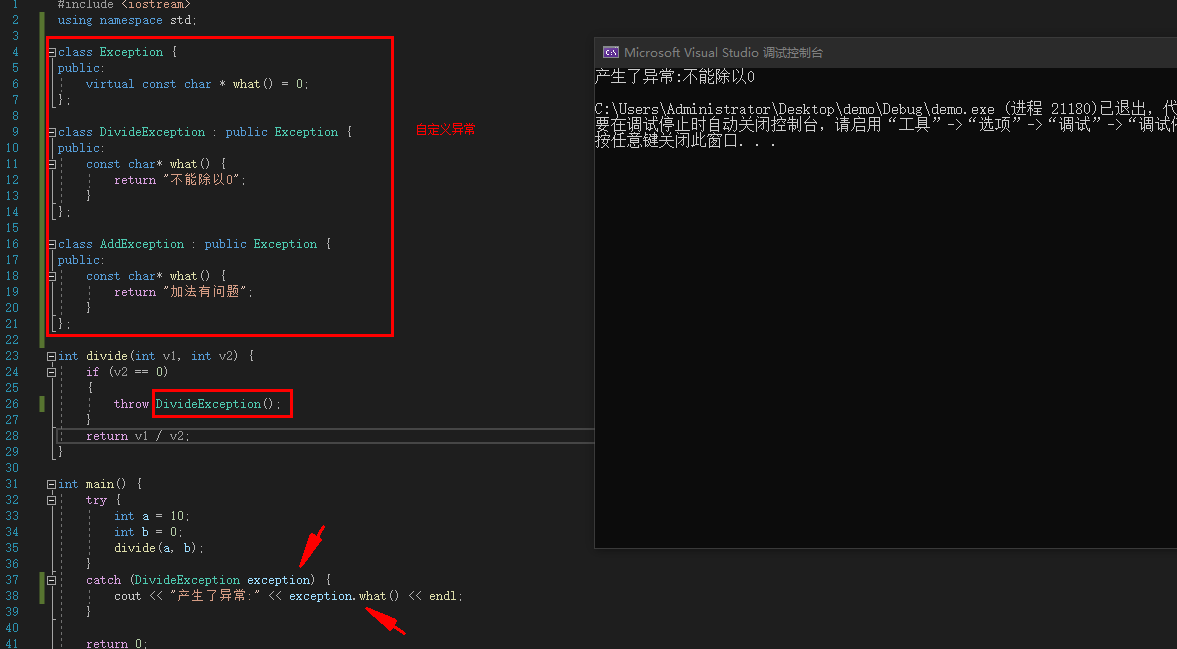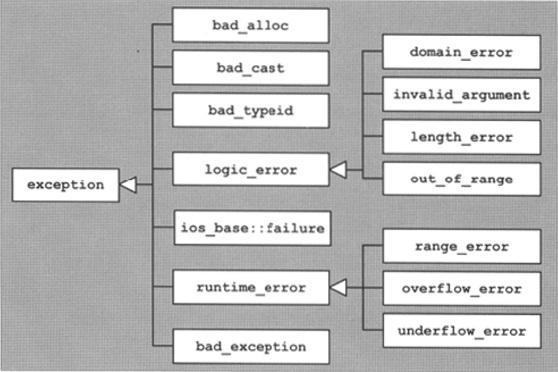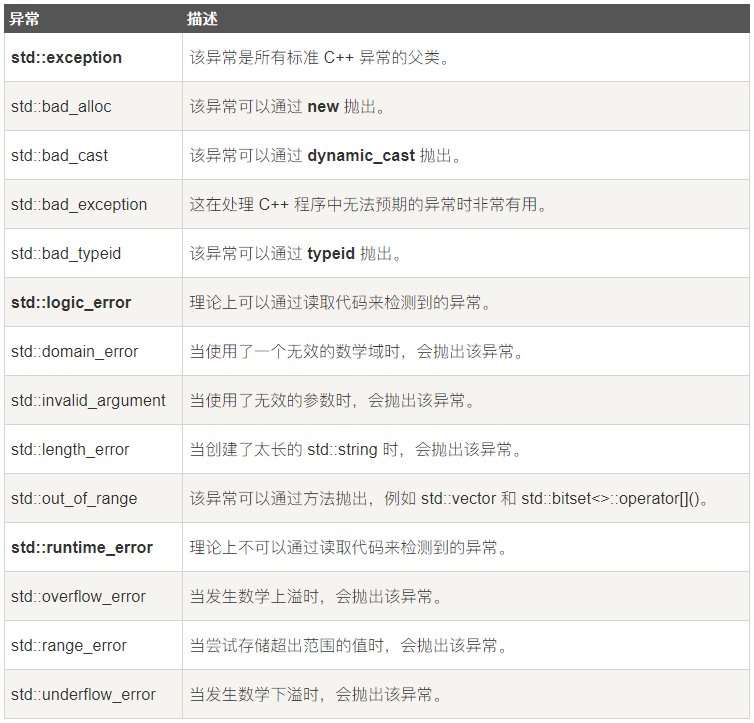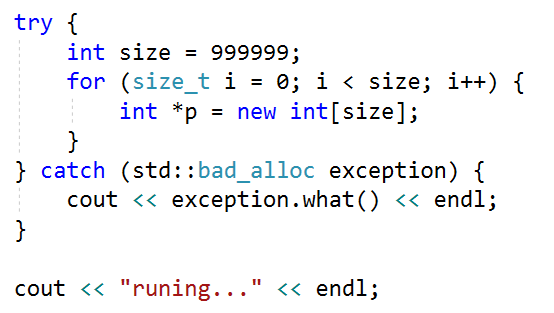程序执行的本质
当我们写完一段程序需要给电脑进行运行时,首先编译器需要将代码编译为CPU可以看懂的机器码然后装载到内存中,CPU读取到内存中的指令后就会执行其中的执行控制IO设备完成相应的工作。
CPU分为寄存器,运算器和控制器三部分。
第一行c++代码
#include <iostream>
int main()
{
std::cout << "Hello World!\\n";
}
|
![image]()
常用语法
c++的源文件扩展名是cpp
c++程序的入口是main函数
c++完全兼容c
cin、cout
需包含头文件 #include <iostream>
cout表示输出,例如:
#include <iostream>
using namespace std;
int main()
{
cout << "Hello World!\\n";
return 0;
}
|
![image]()
其中<<表示左移运算符(位运算)
在c++中endl也表示换行,所以上述语句也可以写成:
#include <iostream>
using namespace std;
int main()
{
cout << "Hello World!" << endl;
return 0;
}
|
cin表示从键盘输入,例如:
#include <iostream>
using namespace std;
int main()
{
int age;
cin >> age;
cout << "age is: " << age << endl;
return 0;
}
|
![image]()
其中>>表示有移运算符
getchar()
等待用户输入
函数重载(overload)
当一个项目中存在多个函数,这些函数的函数名相同,但是函数传入的个数和类型不同,c++会自动按照函数传入的个数和类型寻找对应的函数进行运算,这个过程称为函数重载。
例如:
#include <iostream>
using namespace std;
int sum(int v1, int v2) {
return v1 + v2;
}
int sum(int v1, int v2, int v3) {
return v1 + v2 + v3;
}
int main()
{
cout << sum(10, 20) << endl;
cout << sum(10, 20, 30) << endl;
return 0;
}
|
![image]()
sum函数随着传入的实参个数不同会自动寻找对应的函数去计算。
返回值类型与函数重载无关。
在c语言中是不支持函数重载的。
默认参数
c++允许函数设置默认参数,在调用时可以根据情况省略实参,规则如下:
- 默认参数只能按照右到左的顺序
- 如果函数同时有声明,实现,默认参数只能放在函数声明中
- 默认参数的值可以时常量,全局符号(全局变量,函数名)
例:
#include <iostream>
using namespace std;
int sum(int v1 = 5, int v2 = 6) {
return v1 + v2;
}
int main()
{
cout << sum() << endl;
cout << sum(10) << endl;
cout << sum(10, 20) << endl;
return 0;
}
|
![image]()
extern “C”
被extern c 修饰的代码会按照c语言的方式进行编译。
例:
#include <iostream>
using namespace std;
extern "C" {
void func() {
}
void func(int v1) {
}
}
int main()
{
return 0;
}
|
上面的两个函数使用extern “c”修饰后就会使用c语言的方式进行编译,但是由于c语言不支持函数重载,所以编译会报错。
![image]()
- 如果函数通过是有声明和实现,要让函数声明被
extern "c"修饰,函数实现可以不修饰。
何时需要用到 extern c ?
- 用在c,c++的混合开发中,如果用到一些第三方的c语言库,那么就可以使用 extern c
例:
现在有一个c文件内容为:
#include <math.h>
int sum(int v1, int v2) {
return v1 + v2;
}
int delta(int v1, int v2) {
return v1 - v2;
}
|
如果在c++中需要调用这个c文件中的函数,那么c++文件应该这么写:
#include <iostream>
using namespace std;
extern "C"{
int sum(int v1, int v2);
int delta(int v1, int v2);
}
int main(){
cout << sum(10, 20) << endl;
cout << delta(50, 10) << endl;
return 0;
}
|
![image]()
也就是声明必须用extern "c" 包裹,否则编译会报错
为了方便调用,可以将声明放到头文件中,新建头文件math.h:
![image]()
然后c++中include此头文件即可:
![image]()
ifdef
为了使只有c++调用math.h头文件时才加extern “c”,可以使用#ifdef进行判断
c++文件默认都会有一个宏定义 #define __cplusplus
然后头文件就可以这样写:
#ifdef __cplusplus
extern "C" {
#endif
int sum(int v1, int v2);
int delta(int v1, int v2);
#ifdef __cplusplus
}
#endif
|
pragma once
# pragma once是用来防止头文件被重复包含
例如在某个程序中多次写了包含头文件,在头文件中写了# pragma once就可以防止头文件中的内容被多次编译。
![image]()
![image]()
内联函数
使用inline修饰函数的声明或实现,可以使其变成内联函数
建议声明和实现都增加inline修饰
特点:
- 编译器会将函数调用直接展开为函数体代码
- 可以减少函数调用的开销
- 会增大代码体积
注意:
- 尽量不要内联超过10行代码的函数
- 有些函数即使声明为
inline,也不一定会被编译器内联,比如递归函数
内联函数和宏的区别
例如:
#include <iostream>
using namespace std;
#define sum(v1,v2) v1 + v2
int main(){
int c = sum(10, 20);
cout << c << endl;
return 0;
}
|
![image]()
上述代码也可以正常运行
- 对比宏,内联函数多了语法检测和函数特性
- 宏只是简单的文本替换,所以遇到计算尽量使用函数
const
const是常量的意思,被其修饰的变量不可修改。
- 如果修饰的是类、结构体(的指针),其成员也不可以更改
- const修饰的其右边的内容
一下5个指针的分别是什么含义?
int age = 10;
const int *p0 = &age;
int const *p1 = &age;
int * const p2 = &age;
|
例如:
#include <iostream>
using namespace std;
int main(){
int age = 10;
int heigh = 20;
int * const p2 = &age;
*p2 = 30;
p2 = &heigh;
*p2 = 40;
return 0;
}
|
![image]()
报错的原因是const修饰的是其右边的内容,const修饰的是p2所以p2=&heigh报错,而*p2=30就不会报错.
引用(reference)
在C语言中,使用指针(Pointer)可以间接获取、修改某个变量的值
例:
#include <iostream>
using namespace std;
int main(){
int age = 10;
int* p = &age;
*p = 20;
cout << age << endl;
return 0;
}
|
![image]()
在C++中,使用引用(Reference)可以起到跟指针类似的功能
例:
#include <iostream>
using namespace std;
int main(){
int age = 10;
int &refAge = age;
refAge = 20;
cout << age << endl;
return 0;
}
|
![image]()
- 引用相当于是变量的别名(基本数据类型、枚举、结构体、类、指针、数组等,都可以有引用)
- 对引用做计算,就是对引用所指向的变量做计算
- 在定义的时候就必须初始化,一旦指向了某个变量,就不可以再改变,“从一而终”
- 可以利用引用初始化另一个引用,相当于某个变量的多个别名
- 不存在【引用的引用、指向引用的指针、引用数组】
引用存在的价值之一:比指针更安全、函数返回值可以被赋值
例:
#include <iostream>
using namespace std;
void swap(int &v1, int &v2) {
int tmp = v1;
v1 = v2;
v2 = tmp;
}
int main(){
int a = 10;
int b = 20;
swap(a, b);
cout << "a= " << a << " b= " << b << endl;
return 0;
}
|
![image]()
上述代码就轻松完成了在主函数内部使用用swap函数完成a和b的值的替换,使得swap函数访问了它函数外部的值。
汇编
汇编语言的种类:
- 8086汇编(16bit)
- x86汇编(32bit)
- x64汇编(64bit)
- ARM汇编(嵌入式、移动设备
寄存器
![image]()
通常,CPU会将内存中的数据存到寄存器中,然后在对寄存器中的数据进行运算
![image]()
x64汇编-寄存器
RAX RBX RCX RDX 为通用寄存器
X64架构的寄存器,一个寄存器可以存8个字节的数据
x86架构下的通用寄存器为:EAX EBX ECX EDX ,为了兼容32位的CPU架构,拿出了最低四个字节来存放EAX的数据
![image]()
内联汇编
在c++中嵌入汇编代码称为内联汇编,汇编代码使用__asm包裹。
例如:
#include <iostream>
using namespace std;
int main(){
int a = 10;
__asm {
mov eax, 10
}
return 0;
}
|
mov指令
mov dest, src
将src的内容赋值给dest,类似于dest = src
[ 地址值 ]
中括号[ ]里面放的都是内存地址
word是2字节,dword是4字节(double word),qword是8字节(quad word)
表示将10放到内存地址为a的存储空间中,并占用4个字节
call函数地址
call 表示调用函数
![image]()
lea指令
lea dest, [ 地址值 ]
将地址值赋值给dest,类似于dest = 地址值
lea是直接赋值地址值,而mov是取内存地址中存放的东西
例:
mov eax, dword ptr [1122H]
表示取出[1122H]这个内存地址中存放的东西赋值给eax
lea eax, [1122H]
表示直接将1122H赋值给eax
|
ret
ret表示函数返回
xor
xor op1, op2
将op1和op2异或的结果赋值给op1,类似于op1 = op1 ^ op2
add
add op1, op2
类似于op1 = op1 + op2
sub
sub op1, op2
类似于op1 = op1 - op2
inc
inc op
自增,类似于op = op + 1
des
dec op
自减,类似于op = op – 1
jmp
jmp 内存地址
跳转到某个内存地址去执行代码
j开头的一般都是跳转,大多数是带条件的跳转,一般跟test、cmp等指令配合使用
面向对象
类的定义
C++中可以使用struct、class来定义一个类
struct和class的区别:
struct的默认成员权限是public
class的默认成员权限是private
#include <iostream>
using namespace std;
struct Person{
int m_age;
void run() {
cout << m_age << "run" << endl;
}
};
|
或:
class Person {
public:
int m_age;
void run() {
cout << m_age << "run" << endl;
}
};
|
类的实例化
int main(){
Person person;
person.m_age = 20;
person.run();
return 0;
}
|
对象的内存布局
![image]()
this
this是指向当前对象的指针
对象在调用成员函数的时候,会自动传入当前对象的内存地址
#include <iostream>
using namespace std;
class Person {
public:
int m_age;
void run() {
cout << this->m_age << "run()" << endl;
}
};
int main(){
Person person1;
person1.m_age = 20;
person1.run();
Person person2;
person2.m_age = 30;
person2.run();
return 0;
}
|
如上面的例子,当存在两个Person对象时,不同的对象在调用同一个run()方法时是如何寻找到属于自己的m_age的呢?就是靠this这个指针,this默认指向当前对象的内存地址,为当前对象寻找对应方法。this是一个隐式参数,其实不写this也可以正常执行,如下:
#include <iostream>
using namespace std;
class Person {
public:
int m_age;
void run() {
cout << m_age << "run()" << endl;
}
};
int main(){
Person person1;
person1.m_age = 20;
person1.run();
Person person2;
person2.m_age = 30;
person2.run();
return 0;
}
|
![image]()
![image]()
指针访问对象成员的本质
待补充
封装
封装的含义是成员变量私有化,提供公共的getter和setter给外界去访问成员变量。
例:
#include <iostream>
using namespace std;
class Person {
private:
int m_age;
public:
void setAge(int age) {
if (age<=0){
m_age = 1;
}
else {
m_age = age;
}
}
int getAge(){
return m_age;
}
};
int main(){
Person person;
person.setAge(-4);
cout << person.getAge() << endl;
return 0;
}
|
![image]()
内存空间布局
每个应用都有自己独立的内存空间,其内存空间一般都有以下几大区域:
代码段(代码区)
用于存放代码
数据段(全局区)
用于存放全局变量等
栈空间
每调用一个函数就会给它分配一段连续的栈空间,等函数调用完毕后会自动回收这段栈空间
自动分配和回收
堆空间
需要主动去申请和释放
![image]()
堆空间
在程序运行过程,为了能够自由控制内存的生命周期、大小,会经常使用堆空间的内存
堆空间的申请\释放(malloc \ free)
例:
#include <iostream>
using namespace std;
int main(){
int * p = (int *) malloc(4);
* p = 11;
cout << * p << endl;
free(p);
return 0;
}
|
![image]()
或申请一个char类型的内存
#include <iostream>
using namespace std;
int main(){
char * p = (char *) malloc(4);
*p = 'a';
*(p + 1) = 10;
*(p + 2) = 11;
*(p + 3) = 12;
cout << * p << endl;
free(p);
return 0;
}
|
![image]()
除此外c++还支持new/delete方式申请内存
#include <iostream>
using namespace std;
int main(){
int *p = new int;
*p = 10;
cout << * p << endl;
delete p;
return 0;
}
|
![image]()
注意
- 申请堆空间成功后,会返回那一段内存空间的地址
- 申请和释放必须是1对1的关系,不然可能会存在内存泄露
堆空间的初始化
![image]()
![image]()
memset函数是将较大的数据结构(比如对象、数组等)内存清零的比较快的方法。
![image]()
对象的内存
对象的内存可以存在于3种地方:
- 全局区(数据段):全局变量
- 栈空间:函数里面的局部变量
- 堆空间:动态申请内存(malloc、new等)
![image]()
构造函数(Constructor)
构造函数(也叫构造器),在对象创建的时候自动调用,一般用于完成对象的初始化工作
例:
#include <iostream>
using namespace std;
class Person {
public:
int m_age;
Person() {
cout << "Person()" << endl;
}
};
int main(){
Person person;
Person person1;
Person person2;
return 0;
}
|
![image]()
可看到在对象初始化时就会自动调用构造函数。
特点
- 函数名与类同名,无返回值(void都不能写),可以有参数,可以重载,可以有多个构造函数
- 一旦自定义了构造函数,必须用其中一个自定义的构造函数来初始化对象
注意:
通过malloc分配的对象不会调用构造函数
析构函数(Destructor)
析构函数(也叫析构器),在对象销毁的时候自动调用,一般用于完成对象的清理工作。
函数名以~开头,与类同名,无返回值(void都不能写),无参,不可以重载,有且只有一个析构函数
例:
#include <iostream>
using namespace std;
class Person {
public:
int m_age;
Person() {
cout << "Person()" << endl;
}
~Person() {
cout << "~Persoon()" << endl;
}
};
int main(){
Person person;
Person person1;
Person person2;
return 0;
}
|
![image]()
注意:
- 通过malloc分配的对象free的时候不会调用析构函数
- 构造函数、析构函数要声明为public,才能被外界正常使用
声明和实现分离
例:
#include <iostream>
using namespace std;
class Person {
private:
int m_age;
public:
void setAge(int age);
int getAge();
Person();
~Person();
};
Person::Person() {
m_age = 0;
}
void Person::setAge(int age) {
this->m_age = age;
}
int Person::getAge() {
return this->m_age;
}
Person::~Person() {
}
int main() {
Person person;
person.setAge(1);
cout << person.getAge() << endl;
}
|
![image]()
也可以将声明放在头文件中
![image]()
命名空间
命名空间可以用来避免命名冲突。
例:
#include <iostream>
using namespace std;
namespace abc {
int g_age;
class Person {};
void test() {
}
}
int main() {
abc::g_age = 20;
abc::Person* p = new abc::Person();
abc::test();
return 0;
}
|
可以使用namespace 来定义命令空间。
![image]()
为了方便,可以使用using namespace来规定命名空间的范围
例:
using namespace abc;
g_age = 20;
Person* p = new Person();
test();
|
![image]()
命名空间可以嵌套和合并,c++中存在一个默认的全局命名空间::我们创建的命名空间默认都嵌套在它里面.
#include <iostream>
using namespace std;
int g_age;
namespace abc {
int g_age;
class Person {};
void test() {
}
}
int main() {
::g_age = 20;
using namespace abc;
::abc::g_age = 70;
Person* p = new Person();
test();
return 0;
}
|
![image]()
继承
继承,可以让子类拥有父类的所有成员(变量\函数)。
例:
#include <iostream>
using namespace std;
class Person {
public:
int age;
void run() {
cout << "Person::run()" << endl;
}
};
class Student : public Person {
public:
int class_num;
void study() {
cout << "Student::study()" << endl;
}
};
int main() {
Student student;
student.age = 20;
student.class_num = 10;
student.run();
student.study();
}
|
![image]()
关系描述
- Student是子类(subclass,派生类)
- Person是父类(superclass,超类)
具体的继承关系可参考:https://www.runoob.com/cplusplus/cpp-inheritance.html
继承对象的内存布局:
![image]()
成员访问权限
成员访问权限、继承方式有3种:
- public:公共的,任何地方都可以访问(struct默认)
- protected:子类内部、当前类内部可以访问
- private:私有的,只有当前类内部可以访问(class默认)
子类内部访问父类成员的权限,是以下2项中权限最小的那个
开发中用的最多的继承方式是public,这样能保留父类原来的成员访问权限
访问权限不影响对象的内存布局
具体的继承关系可参考:https://www.runoob.com/cplusplus/cpp-inheritance.html
初始化列表
特点
- 一种便捷的初始化成员变量的方式
- 只能用在构造函数中
- 初始化顺序只跟成员变量的声明顺序有关
例:
class Person {
public:
int m_age;
int m_height;
Person(int age, int height) : m_age(age), m_height(height) {
}
};
|
![image]()
上述的这种写法就是初始化列表
它等价于:
class Person {
public:
int m_age;
int m_height;
Person(int age, int height) {
this->m_age = age;
this->m_height = height;
}
};
|
初始化列表与默认参数配合使用
例:
#include <iostream>
using namespace std;
class Person {
public:
int m_age;
int m_height;
Person(int age = 0, int height = 0) : m_age(age), m_height(height) {
cout << m_age << " " << m_height << endl;
}
};
int main() {
Person person1;
Person person2(18);
Person person3(18, 20);
return 0;
}
|
![image]()
注意:
如果函数声明和实现是分离的
- 初始化列表只能写在函数的实现中
- 默认参数只能写在函数的声明中
构造函数的互相调用
#include <iostream>
using namespace std;
class Person {
public:
int m_age;
int m_height;
Person() : Person(10,20) {
}
Person(int age , int height) : m_age(age), m_height(height) {
cout << m_age << " " << m_height << endl;
}
};
int main() {
Person person1;
return 0;
}
|
![image]()
![image]()
父类的构造函数
- 子类的构造函数默认会调用父类的无参构造函数
- 如果子类的构造函数显式地调用了父类的有参构造函数,就不会再去默认调用父类的无参构造函数
- 如果父类缺少无参构造函数,子类的构造函数必须显式调用父类的有参构造函数
父类指针,子类指针
父类指针可以指向子类对象,是安全的,开发中经常用到(继承方式必须是public)。
子类指针指向父类对象是不安全的。
例:
![image]()
多态
默认情况下,编译器只会根据指针类型调用对应的函数,不存在多态。
例:
#include <iostream>
using namespace std;
class Dog {
public:
void speak() {
cout << "Dog::speak()" << endl;
}
void run() {
cout << "Dog::run()" << endl;
}
};
class Cat {
public:
void speak() {
cout << "Cat::speak()" << endl;
}
void run() {
cout << "Cat::run()" << endl;
}
};
class Pig {
public:
void speak() {
cout << "Pig::speak()" << endl;
}
void run() {
cout << "Pig::run()" << endl;
}
};
void liu(Dog* p) {
p->run();
p->speak();
}
void liu(Cat* p) {
p->run();
p->speak();
}
void liu(Pig* p) {
p->run();
p->speak();
}
int main() {
liu(new Dog());
liu(new Cat());
liu(new Pig());
return 0;
}
|
在上面的例子中,虽然三只动物都有共同的属性 run 和 speak,但是我们定义的三个函数在表达三只动物的run和speak。
![image]()
那能否在定义一个Animal 父类,让三只动物都继承其run和speak呢?
例:
#include <iostream>
using namespace std;
class Animal {
public:
void speak() {
cout << "Animal::speak()" << endl;
}
void run() {
cout << "Animal::run()" << endl;
}
};
class Dog : public Animal{
public:
void speak() {
cout << "Dog::speak()" << endl;
}
void run() {
cout << "Dog::run()" << endl;
}
};
class Cat : public Animal {
public:
void speak() {
cout << "Cat::speak()" << endl;
}
void run() {
cout << "Cat::run()" << endl;
}
};
class Pig : public Animal {
public:
void speak() {
cout << "Pig::speak()" << endl;
}
void run() {
cout << "Pig::run()" << endl;
}
};
void liu(Animal * p) {
p->run();
p->speak();
}
int main() {
liu(new Dog());
liu(new Cat());
liu(new Pig());
return 0;
}
|
![image]()
但是结果确不正确,因为默认情况下,编译器只会根据指针类型调用对应的函数,不存在多态。
多态的要素:
- 子类重写父类的成员函数(override)
- 父类指针指向子类对象
- 利用父类指针调用重写的成员函数
多态是面向对象非常重要的一个特性
- 同一操作作用于不同的对象,可以有不同的解释,产生不同的执行结果
- 在运行时,可以识别出真正的对象类型,调用对应子类中的函数
如何实现多态呢?在c++中需要使用虚函数来实现。
虚函数
C++中的多态通过虚函数(virtual function)来实现。
虚函数:被virtual修饰的成员函数。
只要在父类中声明为虚函数,子类中重写的函数也自动变成虚函数(也就是说子类中可以省略virtual关键字)。
例:
#include <iostream>
using namespace std;
class Animal {
public:
virtual void speak() {
cout << "Animal::speak()" << endl;
}
virtual void run() {
cout << "Animal::run()" << endl;
}
};
class Dog : public Animal{
public:
void speak() {
cout << "Dog::speak()" << endl;
}
void run() {
cout << "Dog::run()" << endl;
}
};
class Cat : public Animal {
public:
void speak() {
cout << "Cat::speak()" << endl;
}
void run() {
cout << "Cat::run()" << endl;
}
};
class Pig : public Animal {
public:
void speak() {
cout << "Pig::speak()" << endl;
}
void run() {
cout << "Pig::run()" << endl;
}
};
void liu(Animal * p) {
p->run();
p->speak();
}
int main() {
liu(new Dog());
liu(new Cat());
liu(new Pig());
return 0;
}
|
![image]()
虚表
虚函数的实现原理是虚表,这个虚表里面存储着最终需要调用的虚函数地址,这个虚表也叫虚函数表。
![image]()
虚析构函数
如果存在父类指针指向子类对象的情况,应该将析构函数声明为虚函数(虚析构函数)
delete父类指针时,才会调用子类的析构函数,保证析构的完整性。
![image]()
纯虚函数
纯虚函数:没有函数体且初始化为0的虚函数,用来定义接口规范
![image]()
抽象类(Abstract Class)
- 含有纯虚函数的类,不可以实例化(不可以创建对象)
- 抽象类也可以包含非纯虚函数、成员变量
- 如果父类是抽象类,子类没有完全重写纯虚函数,那么这个子类依然是抽象类
静态成员
静态成员:被static修饰的成员变量\函数。
可以通过对象(对象.静态成员)、对象指针(对象指针->静态成员)、类访问(类名::静态成员)。
静态成员变量
- 存储在数据段(全局区,类似于全局变量),整个程序运行过程中只有一份内存
- 对比全局变量,它可以设定访问权限(public、protected、private),达到局部共享的目的
- 必须初始化,必须在类外面初始化,初始化时不能带static,如果类的声明和实现分离(在实现.cpp中初始化)
例:
#include <iostream>
using namespace std;
class Car {
public:
static int m_price;
void run() {
cout << "run()" << endl;
}
};
int Car::m_price = 10;
int main() {
Car car1;
car1.m_price = 100;
cout << car1.m_price << endl;
cout << Car::m_price << endl;
return 0;
}
|
![image]()
静态成员函数
- 内部不能使用this指针(this指针只能用在非静态成员函数内部)
- 不能是虚函数(虚函数只能是非静态成员函数)
- 内部不能访问非静态成员变量\函数,只能访问静态成员变量\函数
- 非静态成员函数内部可以访问静态成员变量\函数
- 构造函数、析构函数不能是静态
- 当声明和实现分离时,实现部分不能带static
例:
#include <iostream>
using namespace std;
class Car {
public:
static int m_price;
static void run() {
cout << "run()" << endl;
}
};
int Car::m_price = 10;
int main() {
Car car1;
car1.run();
Car * p = new Car();
p->run();
Car::run();
return 0;
}
|
![image]()
静态成员应用
例:
现在有个需求是统计创建了多少个Car对象。
#include <iostream>
using namespace std;
class Car {
private:
static int m_count;
public:
Car() {
m_count++;
}
~Car() {
m_count--;
}
static int getCount() {
return m_count;
}
};
int Car::m_count = 0;
Car g_car;
int main() {
Car car1;
Car * p = new Car();
cout << Car::getCount() << endl;
return 0;
}
|
![image]()
const 成员
const成员:被const修饰的成员变量、非静态成员函数。
const成员变量
- 必须初始化(类内部初始化),可以在声明的时候直接初始化赋值
- 非static的const成员变量还可以在初始化列表中初始化
const成员函数(非静态)
const关键字写在参数列表后面,函数的声明和实现都必须带const
- 内部不能修改非static成员变量
- 内部只能调用const成员函数、static成员函数
- 非const成员函数可以调用const成员函数
const成员函数和非const成员函数构成重载
非const对象(指针)优先调用非const成员函数
const对象(指针)只能调用const成员函数、static成员函数
引用类型成员
引用类型成员变量必须初始化(不考虑static情况)
![image]()
拷贝构造函数(Copy Constructor)
拷贝构造函数是构造函数的一种.
当利用已存在的对象创建一个新对象时(类似于拷贝),就会调用新对象的拷贝构造函数进行初始化.
拷贝构造函数的格式是固定的,接收一个const引用作为参数.
例:
#include <iostream>
using namespace std;
class Car {
int m_price;
int m_length;
public:
Car(int price = 0, int length = 0) :m_price(price), m_length(length) {
cout << "Car(int price = 0, int length = 0)" << endl;
}
Car(const Car &car) {
cout << "Car(const Car &car)" << endl;
}
void display() {
cout << "price=" << m_price << ", length=" << m_length << endl;
}
};
int main() {
Car car1;
Car car2(100);
Car car3(100, 50);
Car car4(car3);
return 0;
}
|
![image]()
默认情况下不写拷贝构造函数也可以进行拷贝
![image]()
调用父类的拷贝构造函数
例:
#include <iostream>
using namespace std;
class Person {
public:
int m_age;
Person(int age=0) :m_age(age){}
Person(const Person &person) :m_age(person.m_age){}
};
class Student : public Person {
public:
int m_score;
Student(int age=0, int score=0) :Person(age), m_score(score){}
Student(const Student &student) :Person(student), m_score(student.m_score){}
};
int main(){
Student student1(10, 100);
Student student2(student1);
cout << student2.m_age << endl;
cout << student2.m_score << endl;
}
|
![image]()
默认情况下不写拷贝构造函数也可以调用父类的拷贝构造函数
![image]()
浅拷贝和深拷贝
编译器默认的提供的拷贝是浅拷贝(shallow copy)
- 将一个对象中所有成员变量的值拷贝到另一个对象
- 如果某个成员变量是个指针,只会拷贝指针中存储的地址值,并不会拷贝指针指向的内存空间
- 可能会导致堆空间多次free的问题
如果需要实现深拷贝(deep copy),就需要自定义拷贝构造函数
- 将指针类型的成员变量所指向的内存空间,拷贝到新的内存空间
匿名对象
匿名对象:没有变量名、没有被指针指向的对象,用完后马上调用析构
友元
友元包括友元函数和友元类
- 如果将函数A(非成员函数)声明为类C的友元函数,那么函数A就能直接访问类C对象的所有成员
- 如果将类A声明为类C的友元类,那么类A的所有成员函数都能直接访问类C对象的所有成员
- 友元破坏了面向对象的封装性,但在某些频繁访问成员变量的地方可以提高性能
例:
#include <iostream>
using namespace std;
class Point {
int m_x;
int m_y;
public:
int getX() {
return m_x;
};
int getY() {
return m_y;
};
Point(int x , int y): m_x(x),m_y(y){}
void display() {
cout << "(" << m_x << ", " << m_y << ")" <<endl;
}
};
Point add(Point p1, Point p2) {
return Point(p1.getX() + p2.getX(), p1.getY() + p2.getY());
}
int main() {
Point P1(10, 20);
Point P2(20, 30);
Point P3 = add(P1, P2);
P3.display();
return 0;
}
|
![image]()
上述代码使用了get方法去获取Point类中的私有成员变量,假设需要频繁的访问,可以将add方法设置为Point类的友元函数,这样add方法就可以直接访问Point类的私有成员变量。
#include <iostream>
using namespace std;
class Point {
friend Point add(Point p1, Point p2);
int m_x;
int m_y;
public:
int getX() {
return m_x;
};
int getY() {
return m_y;
};
Point(int x , int y): m_x(x),m_y(y){}
void display() {
cout << "(" << m_x << ", " << m_y << ")" <<endl;
}
};
Point add(Point p1, Point p2) {
return Point(p1.m_x + p2.m_x, p1.m_y + p2.m_y);
}
int main() {
Point P1(10, 20);
Point P2(20, 30);
Point P3 = add(P1, P2);
P3.display();
return 0;
}
|
![image]()
内部类
如果将类A定义在类C的内部,那么类A就是一个内部类(嵌套类)。
内部类的特点:
- 支持public、protected、private权限
- 成员函数可以直接访问其外部类对象的所有成员(反过来则不行)
- 成员函数可以直接不带类名、对象名访问其外部类的static成员
- 不会影响外部类的内存布局
- 可以在外部类内部声明,在外部类外面进行定义
局部类
在一个函数内部定义的类,称为局部类。
局部类的特点:
- 作用域仅限于所在的函数内部
- 其所有的成员必须定义在类内部,不允许定义static成员变量
- 成员函数不能直接访问函数的局部变量(static变量除外)
其他语法
运算符重载
运算符重载(操作符重载):可以为运算符增加一些新的功能。
![image]()
![image]()
全局函数、成员函数都支持运算符重载。
异常
- 异常是一种在程序运行过程中可能会发生的错误(比如内存不够)
- 异常没有被处理,会导致程序终止
![image]()
throw异常后,会在当前函数中查找匹配的catch,找不到就终止当前函数代码,去上一层函数中查找。如果最终都找不到匹配的catch,整个程序就会终止。
例:
#include <iostream>
using namespace std;
int divide(int v1, int v2) {
if (v2 == 0)
{
throw "不能除以0";
}
return v1 / v2;
}
int main() {
try {
int a = 10;
int b = 0;
divide(a, b);
}
catch (...) {
cout << "运算错误" << endl;
}
return 0;
}
|
![image]()
#include <iostream>
using namespace std;
int divide(int v1, int v2) {
if (v2 == 0)
{
throw "不能除以0";
}
return v1 / v2;
}
int main() {
try {
int a = 10;
int b = 0;
divide(a, b);
}
catch (const char * exception) {
cout << "运算错误:" << exception << endl;
}
return 0;
}
|
![image]()
自定义异常类型
例:
#include <iostream>
using namespace std;
class Exception {
public:
virtual const char * what() = 0;
};
class DivideException : public Exception {
public:
const char* what() {
return "不能除以0";
}
};
class AddException : public Exception {
public:
const char* what() {
return "加法有问题";
}
};
int divide(int v1, int v2) {
if (v2 == 0)
{
throw DivideException();
}
return v1 / v2;
}
int main() {
try {
int a = 10;
int b = 0;
divide(a, b);
}
catch (DivideException exception) {
cout << "产生了异常:" << exception.what() << endl;
}
return 0;
}
|
![image]()
标准异常(std)
![image]()
![image]()
![image]()
